

groovy, jazzy, smoothy daniel zollinger (sax), urs luthard (p), roberto di martino (dr/perc)
Ihre Angaben wurden erfolgreich versandt.

- New Arrivals
- Vinyl New Arrivals
- Blue Note Classic LP Reissues
- Acoustic Sounds Series
- Jazz LP New Arrivals
- ECM Records
- Steeplechase Records
- Spiritual Jazz, Fusion, Jazz Funk & Modal
- Avant-Garde, Free Jazz, Contemporary Music, Ambient & Minimalism
- J Jazz: Deep Modern Jazz from Japan + Related Japanese Music
- Afro-Jazz, Disco-Funk, Soul-Jazz & Global Sounds
- Jazz-Rock, Prog-Rock, Canterbury Sound, RIO & other deviances
- Easy Listening, Exotica, Soundtracks & Library Music
- Jazz, Funk & Soul 7 Inch Collector's Editions
- Not Only Jazz!
- J.M. Recommends
Bert Kaempfert
A swingin´ safari + wonderland by night (50768).

Display all pictures
Tweet Share Pinterest
- Remove this product from my favorite's list.
- Add this product to my list of favorites.
- Share on Facebook!
Title A Swingin´ Safari + Wonderland by Night
Author Bert Kaempfert
Label SwingPort
EAN 8436563181696
Reference SWP 151650
LABEL CODE 50768
DISCS NUMBER 1
More details
Warning: Last items in stock!
Availability date:
The minimum purchase order quantity for the product is 1
Add to cart
LIMITED EDITION IN SPECIAL 3-PANEL DIGIPACK 2-LP ON 1 CD This edition presents two classic Bert Kaempfert albums from his Polydor period: "A Swingin’ Safari" (Polydor 237.584, 1962), and "Wonderland by Night" (Polydor 237.553, 1960). "A Swingin’ Safari" was first issued in the United States under the title "That Happy Feeling" (with a different cover) and climbed to Number 14 in the charts that same year. The latter album contains Kaempfert’s first hit, “Wonderland by Night” that was a Billboard number one for three weeks, starting January 9, 1961. All of this material showcases the eclecticism and sensual orchestral effects that were Kaempfert’s remarkable trademarks. PERSONNEL : TRACKS [1-12]: A SWINGIN’ SAFARI BERT KAEMPFERT, arranger, conductor & His Orchestra. Manfred “Fred” Moch (trumpet), Ladi Geisler (bass). Other personnel unknown. Recorded at Polydor Studio, Rahlstedt, Hamburg, Germany, between December 1961 and March 1962. [13-24]: WONDERLAND BY NIGHT BERT KAEMPFERT, arranger, conductor & His Orchestra. Recorded at Studio Rahlstedt, Hamburg, Germany,late 1960. TRACKS : 01. A SWINGIN’ SAFARI 02. THAT HAPPY FEELING 03. MARKET DAY 04. TAKE ME 05. SIMILAU 06. ZAMBESI 07. AFRIKAAN BEAT 08. HAPPY TRUMPETER 09. TOOTIE FLUTIE 10. WIMOWEH 11. BLACK BEAUTY 12. SKOKIAAN 13. WONDERLAND BY NIGHT 14. AS I LOVE YOU 15. THE AIM OF MY DESIRES 16. STAY WITH ME 17. TAMMY 18. LULLABY FOR LOVERS 19. DRIFTING AND DREAMING 20. LA VIE EN ROSE 21. HAPPINESS NEVER COMES TOO LATE 22. ON THE ALAMO 23. DREAMING THE BLUES 24. THIS SONG IS YOURSALONE TOTAL TIME: 68:48 Min.
Data sheet CD
Customers who bought this product also bought:.
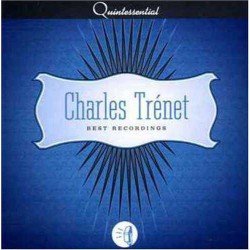
Best Recordings 20 Tracks
Charles Trenet

At the Movies: 1956-62 Film Soundtrack Collection
Elvis Presley

Stars de la Chanson Française
Various Artists
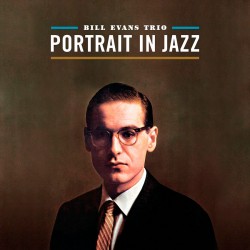
Portrait in Jazz

Roy Orbison
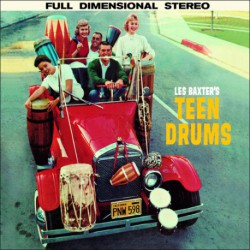
Teen Drums + Young Pops

Modern Country + The Lonely One
Kai Winding
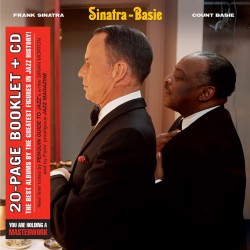
Sinatra-Basie
Frank Sinatra
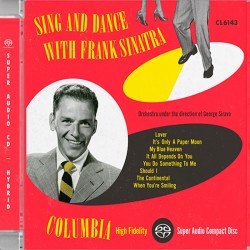
Sing and Dance with Frank Sinatra (Super Audio CD)
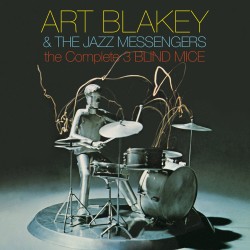
The Complete Three Blind Mice
Art Blakey & The Jazz Messengers
- New Releases
- Vinyl Store

A Swingin' Safari
1 January 1962 12 Songs, 33 minutes ℗ 1962 Revolver Records
Other Versions
More by bert kaempfert, featured on.
Apple Music Pop
Apple Music
You Might Also Like
Billy Vaughn and His Orchestra
Ray Conniff
Max Greger & His Orchestra
Mr. Acker Bilk
Helmut Zacharias
Henry Mancini
Herb Alpert & The Tijuana Brass
Africa, Middle East, and India
- Côte d’Ivoire
- Congo, The Democratic Republic Of The
- Guinea-Bissau
- Niger (English)
- Congo, Republic of
- Saudi Arabia
- Sierra Leone
- South Africa
- Tanzania, United Republic Of
- Turkmenistan
- United Arab Emirates
Asia Pacific
- Indonesia (English)
- Lao People's Democratic Republic
- Malaysia (English)
- Micronesia, Federated States of
- New Zealand
- Papua New Guinea
- Philippines
- Solomon Islands
- Bosnia and Herzegovina
- France (Français)
- Deutschland
- Luxembourg (English)
- Moldova, Republic Of
- North Macedonia
- Portugal (Português)
- Türkiye (English)
- United Kingdom
Latin America and the Caribbean
- Antigua and Barbuda
- Argentina (Español)
- Bolivia (Español)
- Virgin Islands, British
- Cayman Islands
- Chile (Español)
- Colombia (Español)
- Costa Rica (Español)
- República Dominicana
- Ecuador (Español)
- El Salvador (Español)
- Guatemala (Español)
- Honduras (Español)
- Nicaragua (Español)
- Paraguay (Español)
- St. Kitts and Nevis
- Saint Lucia
- St. Vincent and The Grenadines
- Trinidad and Tobago
- Turks and Caicos
- Uruguay (English)
- Venezuela (Español)
The United States and Canada
- Canada (English)
- Canada (Français)
- United States
- Estados Unidos (Español México)
- الولايات المتحدة
- États-Unis (Français France)
- Estados Unidos (Português Brasil)
- 美國 (繁體中文台灣)
- Share full article
Advertisement
Supported by
Grozny Journal
Chechnya’s Capital Rises From the Ashes, Atop Hidden Horrors

By Andrew E. Kramer
- April 30, 2008
GROZNY, Russia The surprise lay under tiles in the basement of the kindergarten on Kadyrov Street, found by laborers toiling here in the war zone turned construction site of Chechnya’s capital city.
The bodies were exhumed and reburied with respect, though with nary a pause in the banging of hammers and plastering of walls to accommodate a forensic study of the basement.
And that, human rights workers say, is nothing unusual in a city more or less at peace now, but with many grim basements and much rebuilding under way.
“People died there, and now they just build a school,” Natalia Estemirova, a researcher with Memorial, a human rights group, said in an interview. Her group documented the discovery of the bodies last summer at the Zvyozdochka, or Starlet, kindergarten.
She added: “We know people disappeared. We know that most of them were killed. And we know we need to look for them with a shovel.”
Any systematic forensic work, though, could revive prickly questions for the departing Russian president, Vladimir V. Putin, about the prosecution of the war that, along with Russia’s economic revival, will serve as his legacy of the past eight years.
As a result, Russia’s general policy toward mass graves in Chechnya is to leave them undisturbed. There are 57 known but unopened mass graves in the republic of Chechnya, which is about the size of Connecticut. Countless smaller grave sites lie beneath the capital’s parks, courtyards and basements.
In Grozny, bulldozers, cranes and men with jackhammers work around and sometimes over graves from two wars, the first from 1994 to 1996 and the second that began in 1999. (The fighting now is sporadic and small in scale.) The city, besieged, bombarded and depopulated by war, has now become the scene of a frantic, oil-financed rebuilding effort. And the authorities point proudly to gleaming new buildings as symbols of the peace.
In the past year, after Russia installed the leader of one of its proxy militias, Ramzan Kadyrov, as president, 969 refugees have received new housing. A mosque that will accommodate 10,000 worshipers is rising on the central square, and scores of schools have been rebuilt.
Yet, the graves in Grozny remain a vexing problem. At least a half dozen have been moved to make room for the rebuilding.
In perhaps the most striking case, in April 2006, workers exhumed 57 bodies in Kirov Park to clear ground for a youth entertainment complex. During bombardments in 1999 and 2000, human rights workers say, residents buried relatives and unidentified victims in the park. Six bodies from that site were never identified, and were reburied in numbered graves in a cemetery.
“Many, many bodies are found,” Ms. Estemirova said.
The graves of Grozny grimly symbolize the peace that Russia has settled for here, one emphasizing physical reconstruction while leaving unaddressed the human scars of the war. There has been no systematic prosecution of war crimes or identification of the dead.
Just how many disappeared remains an open and contentious question. A human rights ombudsman for the Chechen government, Nurdi Nukhazhiyev, has identified 3,018 unsolved disappearances from the two wars. The remains of some of the missing surely are buried under construction sites.
The regional prosecutor has offered a lower figure, saying that 2,747 Chechen civilians have filed missing persons reports, and that 574 of those have been resolved. Memorial, Ms. Estemirova’s group, put the number of people who disappeared at 3,000 to 5,000.
The mass graves have raised tensions between Russia and Europe. The Council of Europe, the human rights monitor, has made a major issue of the exhuming of mass graves and the identification of victims and their killers.
“There are a great number of families who have lost members to abductions,” Thomas Hammarberg, the council’s human rights commissioner, said during a visit to Chechnya this month. “So many people were affected by this it cannot simply be swept under the carpet.”
But, of course, that is what is happening, as construction destroys evidence at the sites of war crimes. The building of the School for the Deaf on Minutka Square, for example, served as a temporary headquarters for Interior Ministry troops who became the focus of a rare, Russian war crimes investigation.
The basement, witnesses said, was used for torture. One Russian officer was convicted of murder. Yet in 2006, the basement was filled with debris, ostensibly to stabilize the site for rebuilding the school, Ms. Estemirova said.
And as building continues, even the question of how to link the names of the missing with the unidentified bodies in Grozny is contentious.
The Council of Europe is encouraging Russia to embrace systematic forensic work in the graves, before too many are disturbed by the building.
Mr. Kadyrov’s government has endorsed a proposal to provide information about the disappeared anonymously on the Internet, separating the question of identification from the politically charged issue of culpability.
Yet disappearances in Chechnya continue. As the Russian policy of “Chechenization” of the conflict has gained traction and, even critics grudgingly say, success in tamping down the violence, abuse by Russian soldiers has waned. Increasingly, the disappearances bear the hallmarks of Chechen-on-Chechen violence.
Many Grozny residents still live in ruins, with yawning gaps in the walls. The city, though, is largely peaceful. Merchants sell cigarettes, stuffed animals and Red Bull energy drinks on the streets. Young men in police uniforms loiter on the sidewalks, spitting out sesame seed husks, Kalashnikovs slung over their shoulders. And the construction boom continues unabated.
But the building provides little solace to Adeni Idalova, a Grozny resident missing two sons. “Our children will never walk on these sidewalks of gold,” she said. “What do we need them for?”
Around the World With The Times
Our reporters across the globe take you into the field..
China’s Risky Power Play: As China pushes to dominate the South China Sea, it is increasingly willing to use force to drive out the Philippines , a treaty ally of the United States, raising fears of a superpower showdown.
Endangering ‘Pura Vida’: Costa Rica’s lush rainforests were a tourist paradise. Now, they are being infiltrated by drug cartels on a quest to find new trafficking routes to evade the authorities.
Life in Kharkiv Endures: Despite constant Russian bombings, residents of the war-ravaged Ukrainian city have found outlets for joy and emotional release above and below ground .
Who Is ‘Ivan the Troll?’: A 3D-printed gun design co-created by a man who lives in Illinois has been linked to terrorists, drug dealers and freedom fighters in at least 15 countries. Read our investigation .
The Tram Driver Olympics: In Frankfurt, Europe’s public transit captains showed off their skills at an annual championship. The event might best be described as tram dressage .
Yuri Kozyrev: Photographing 15 Years of Chechnya’s Troubled History

Yuri Kozyrev recalls the winter of 1999 as one of the most trying and tragic of his career as a photographer. It was the eve of Vladimir Putin’s ascent to the Russian presidency, and the height of the Russian bombardment of Chechnya, when entire towns in that breakaway republic were, as the Russians often put it, “made level with the earth.”
Kozyrev, a native of Moscow, documented both of Chechnya’s wars against Russia in the 1990s. The first one, fought between 1994 and 1996, had resulted in a humiliating defeat for Russia. But the carnage was far worse when the conflict resumed under Putin in 1999.
Arriving in Chechnya that fall, Kozyrev’s plan was to find and photograph two men amid the chaos of the Russian invasion. The first was Major General Alexander Ivanovich Otrakovsky, who was then commanding the Russian marines from his encampment near the town of Tsentaroy, a key stronghold of the Chechen separatists. The second was the general’s son, Captain Ivan Otrakovsky, who was serving on the front lines not far from the base, in one of the most hotly contested patches of territory.
The aim, says Kozyrev, was to document the two generations of Russian servicemen involved in the conflict – the elder brought up at the height of Soviet power during the Cold War, the younger in the dying years of Moscow’s empire. After weeks of negotiations, he finally managed to embed with the marines and to track down their general, a stocky man with a sly smile and a distinctive mole on the right side of his nose.
At the time, his command center was in an abandoned storage facility for crude oil, Chechnya’s most plentiful and lucrative commodity – and one of the main reasons why Russia refused to allow the region to secede. “It was incredible,” Kozyrev says of his first encounter with the general. “Here were these commanders living inside of a giant oil bunker.”
He recalls Otrakovsky as a kindly intellectual, nothing like the Russian cutthroats who would later be accused of committing atrocities in Chechnya. The general, whose troops referred to him affectionately as Dyed, or Grandpa, was willing to help Kozyrev. But he explained that reaching his son on the front lines would be extremely dangerous, as it would require passing through enemy territory around Tsentaroy.
That town was well known in Chechnya as the home of the Kadyrov clan, an extended family of rebel fighters whose patriarch, the mufti Akhmad Kadyrov, had served as the religious leader of the rebellion. During the first war for independence in the 1990s, he had even declared a state of jihad against Russia, instructing all Chechens that it was their duty to “kill as many Russians as they could.”
At the start of the second war, however, Kadyrov switched sides and agreed to help the Russians, causing a fateful split within the rebel ranks. While the more recalcitrant insurgents had turned to the tactics of terrorism and the ideology of radical Islam, Akhmad Kadyrov abandoned his previous calls for jihad and agreed to serve as Putin’s proxy leader in Chechnya in the fall of 1999.
That did not stop the fighting around his home village, as various insurgent groups continued attacking Russian and loyalist forces positioned around Tsentaroy. So none of the Russian marines were especially keen to move around the area unless they had good reason, and it took Kozyrev days to convince the Russian commander to allow him to reach the front lines. Eventually Gen. Otrakovsky consented, providing the photographer with an escort of about ten marines and two armored personnel carriers.
They set out on what Kozyrev recalls as an especially cold day, rumbling through fog or mist that made it difficult to see the surrounding terrain. As the general had feared, the group was ambushed. From multiple directions, Chechen fighters opened fire with machine guns and rocket-propelled grenades, forcing the convoy to retreat from Tsentaroy. One of the marines was killed in the firefight; three others were wounded.
When they returned to the base, it was clear from the glares of the troops that they all blamed Kozyrev for the fiasco, he says, and Gen. Otrakovsky advised the photographer to leave in the morning. “He said it may not be safe anymore for me to stay among his men,” Kozyrev remembers.
The trauma of that incident has lingered, weighing heaviest during his later assignments in Chechnya. Today, the region is ruled by Kadyrov’s son Ramzan, who took over after his father was assassinated in 2004. His native village of Tsentaroy has since enjoyed a generous stream of aid for redevelopment, including the construction of a beautiful mosque dedicated to Ramzan Kadyrov’s mother.
The rest of Chechnya has been rebuilt with similar largesse from Moscow, which has poured billions of dollars into the reconstruction of the cities and towns it had destroyed. When Kozyrev returned to Chechnya in 2009, nearly a decade after the end of the war, he says, “It blew my mind. The place is unrecognizable.”
The Chechen capital of Grozny – which the U.N. deemed “the most destroyed city on earth” in 2003 – is now a gleaming metropolis. Its center is packed with skyscrapers, sporting arenas, shopping plazas and an enormous mosque, the largest in Europe, dedicated to the memory of Akhmad Kadyrov.
His clan now rules the region unchallenged, having sidelined all of its local rivals with Moscow’s unflinching support. Throughout the region, portraits of Putin and the Kadyrovs are now plastered on the facades of buildings and along highways. Among the more ostentatious is a gigantic picture of Akhmad Kadyrov astride a rearing stallion, which adorns a building at the end of the city’s main drag – the Avenue of V.V. Putin.
The strangeness of the transformation, and of its architects, still seems astounding to Kozyrev, who last went on assignment to Chechnya for TIME in April. The trips always remind him of Gen. Otrakovsy, who died of a heart attack while commanding the marines in southern Chechnya, about four months after the young photographer had shown up to ask for his help. The general’s son, whom Kozyrev never did manage to find, went on to become a right-wing politician in Russia with close ties to Orthodox Christian conservative groups.
These were the men who executed the war that helped bring Putin to power. “But it was all the decision of one man to bring Chechnya back under control in ‘99. Putin decided to do that,” Kozyrev says. “And it’s incredible, when you think about it. But the men of Tsentaroy turned out to be his most loyal helpers.”
Yuri Kozyrev is a photojournalist and a TIME contract photographer. He is represented by Noor . In 2000, he received two World Press Photo photojournalism awards for his coverage of the second Chechen war in 1999.
Alice Gabriner , who edited this photo essay, is TIME’s International Photo Editor.
Simon Shuster is a reporter for TIME based in Moscow.
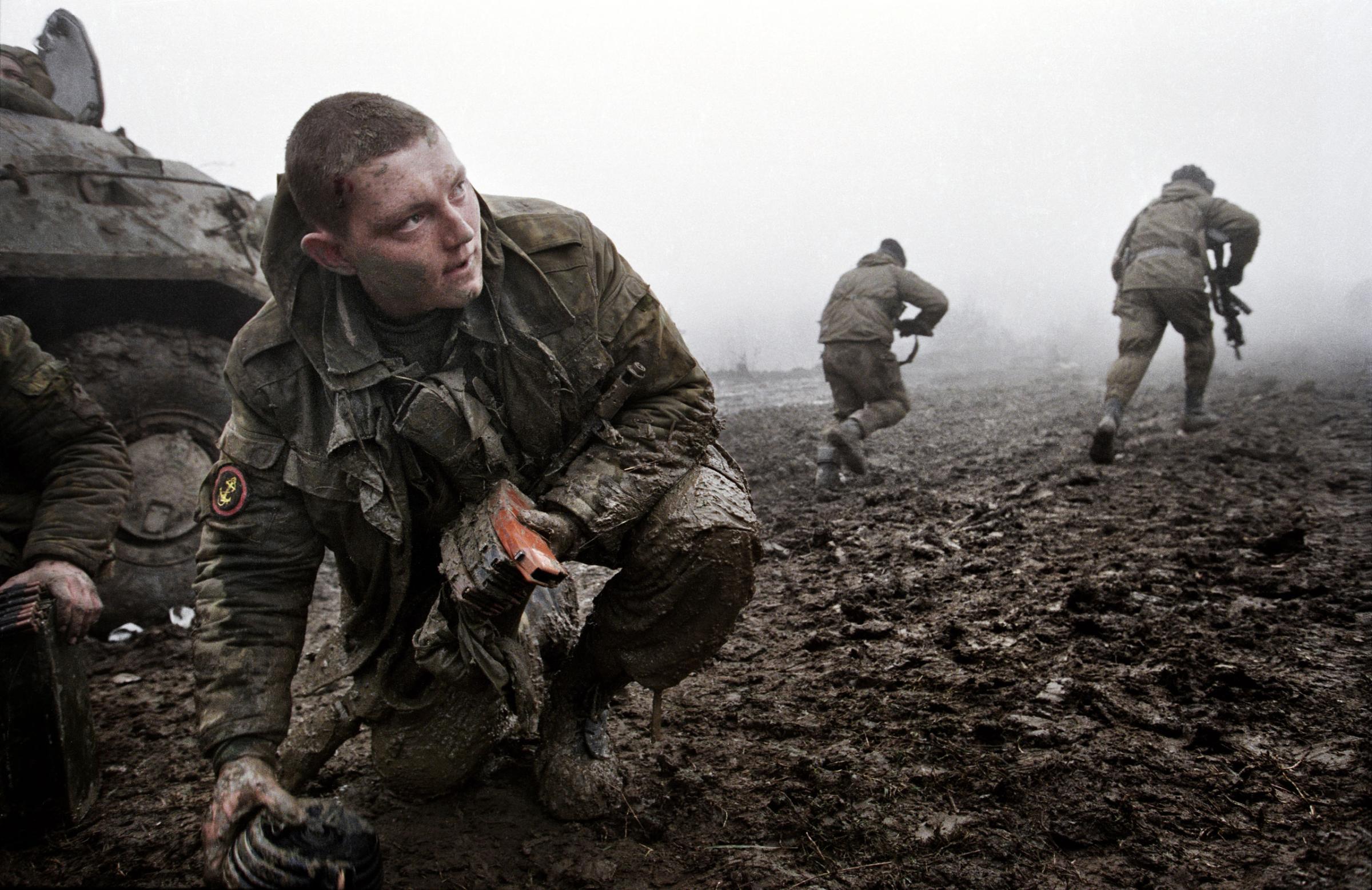
More Must-Reads from TIME
- Welcome to the Golden Age of Scams
- Introducing TIME's 2024 Latino Leaders
- How to Make an Argument That’s Actually Persuasive
- Did the Pandemic Break Our Brains?
- 33 True Crime Documentaries That Shaped the Genre
- The Ordained Rabbi Who Bought a Porn Company
- Why Gut Health Issues Are More Common in Women
- The 100 Most Influential People in AI 2024
Contact us at [email protected]
Chechnya, Russia and 20 years of conflict
How the tiny region shaped post-Soviet Russia on the 20th anniversary of the start of first Chechnya war.
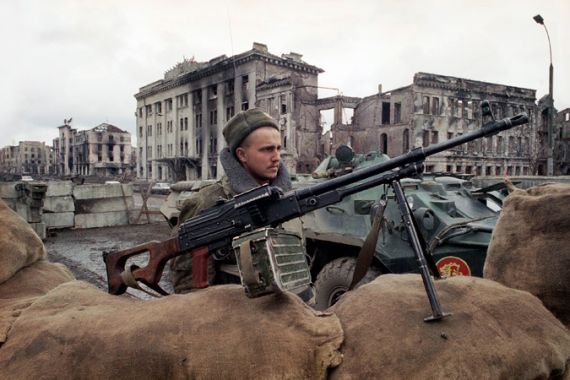
Moscow, Russia – Twenty years ago on Thursday, Moscow started what it thought would be a “blitzkrieg” against secular separatists in Chechnya, a tiny, oil-rich province in Russia’s North Caucasus region that had declared its independence.
But the first Chechen war became Russia’s Vietnam; the second war was declared a victory only in 2009. The two conflicts have reshaped Russia, Chechnya, their rulers – and those who oppose them.
In 1994, s hortly after Moscow invaded Chechnya in an effort to restore its territorial integrity, Akhmad Kadyrov, a bearded, barrel-chested Muslim scholar turned guerrilla commander, declared jihad on all Russians and said each Chechen should kill at least 150 of them.
That was the proportion of the populations on each side of the conflict: some 150 million Russians and less than a million Chechens in a small, landlocked province, which the separatists wanted to carve out of Russia.
Western media and politicians dubbed the Chechens “freedom fighters” – an army of Davids fighting the Russian Goliath.
Moscow was lambasted internationally for disproportionate use of force and rolling back on the democratic freedoms that former leader Boris Yeltsin was so eager to introduce after the 1991 Soviet Union collapse.
Tens of thousands died amid atrocities committed by both sides – and many more were displaced before 1996, when the Russians retreated, leaving Chechnya essentially independent.
Retreating was a humiliation for Russia’s military machine that less than a decade earlier had presented a seemingly formidable threat to the entire Western world.
Chechen against Chechen
Independence did not quite work out for the Chechens. The separatist government based in the ruined capital, Grozny, lost control over the rest of Chechnya.
Feuding field commanders and foreign jihadists, such as the Saudi known as Emir al-Khattab, ruled small districts with their own little armies. Kidnappings for ransom – along with primitive extraction of oil – were their main sources of income.
Many of the foreigners adhered to a puritanical Muslim ideology known as Wahhabism that ran counter to Chechnya’s Sufi traditions.
Akhmad Kadyrov, who was appointed as top Mufti of Chechnya, came into opposition with the puritans and their Chechen supporters, because he saw their extremist views as a threat to the separatist movement. In 1998, Kadyrov openly renounced the Wahhabis – and barely survived the first of many assassination attempts.
Kadyrov soon switched alliances, siding with the people upon whom he had once declared war – the Russians.
A virtually unknown ex-KBG officer, Vladimir Putin became Russia’s new prime minister i n August 1999 and w ithin weeks led a military operation against the Chechen fighters.
RELATED: Timeline: Attacks in Russia
When a series of explosions in apartment buildings in Moscow and two Russian towns killed more than 300 Russians, Moscow blamed Chechen rebels and embarked on an epic “anti-terrorist operation,” which became the second Chechen war.
Putin’s approval ratings skyrocketed, paving the way for his first presidency. A ided by Kadyrov and other Chechen clans who had pledged allegiance to the Kremlin, t he Russian military quickly returned most of Chechnya to Moscow’s control. In 2003, Kadyrov was elected Chechen president.
Russian targets
Cornered in Chechnya, the separatists took the war to Russia.
Attacks throughout the country became a grim reality of the new war and involved explosions in cities and towns, on planes and public transport.
At least two dozen attacks were carried out by female suicide bombers. Dubbed “black widows”, they became a sinister image imprinted on Russia’s collective psyche.
One such attack killed Akhmad Kadyrov in May 2004. His son, 27-year-old Ramzan Kadyrov, was too young to run for president at the time, but as head of his father’s security service, he quickly became Chechnya’s de facto ruler. I n 2007, soon after he turned 30, the younger Kadyrov was elected president.
Four months after his father’s assassination, Chechen separatists seized a public school in the town of Beslan taking more than 1,000 hostages, mostly children. Almost 200 kids died when Russian forces stormed the school. The incident changed the world’s attitude towards the Chechen cause – “freedom fighters” became “Islamic insurgents” in the Western media.
Meanwhile, the media in Russia came under attack.
“The saying was that it was journalists who won the first Chechen war,” says Tatyana Lokshina, deputy director of the Moscow branch of Human Rights Watch, an international rights watchdog.
Moscow used unfavourable media coverage of the war as an excuse to curtail press freedoms. The Kremlin took over all national television networks and most major newspapers.
“For years, Vladimir Putin saw the pacification of Chechnya as his main achievement,” says Stanislav Belkovsky, a Moscow-based political analyst . “In that respect, Putin has a colossal psychological dependency on Chechnya and Ramzan Kadyrov who ensured the pacification.”
The Beslan crisis also served as a pretext to tighten political screws in Russia. Putin eliminated regional gubernatorial elections, complicated participation of opposition parties in elections, and limited democratic freedoms.
The public hailed Putin for bringing stability and pacifying Chechnya. The victory revived Moscow’s imperial ambitions – at least in the area of the former Soviet Union.
Shaping today’s Russia
Moscow won the brief 2008 Russo-Georgian war over the breakaway Georgian province of South Ossetia . In March 2014, Russia took over Crimea from Ukraine and helped unleash a civil war between pro-Russian separatists and the central Ukrainian government just a month later.
Both Chechen wars became systemic factors in shaping today's Russia. Instead of peaceful development inside the country we moved to the priority of external expansion by - Stanislav Belkovsky, political analyst
“Both Chechen wars became systemic factors in shaping today’s Russia,” says Belkovsky . “Instead of peaceful development inside the country, we moved to the priority of external expansion.”
Putin declared “the counter-terrorism operation” in Chechnya over in 2009 – just when things in North Caucasus took a turn for the worse.
Dagestan and several other provinces in the region became the new hotbeds of radical Islamism. A new generation of Moscow’s foes did not want secular separation – instead they are fighting to establish a “Caucasus Emirate” that includes adjacent Russian regions with sizable Muslim populations.
At least 529 people were killed and 457 wounded in North Caucasus in 2013, according to Kavkazsky Uzel, a Russian web portal that monitors the situation in the region. The confrontation has turned into “Europe’s most active armed conflict ” , according to the International Crisis Group, a conflict-monitoring organisation.
The insurgency became self-sustaining because of a vicious circle perpetuated by corruption and brutality.
Federal forces and police trigger the violence with extra-judicial killings, arrests, kidnappings and other abuses, according to rights groups and critics. They claim young men have no other options but to join the rebels because corrupt officials blacklist their families to extort bribes.
The fighters, in turn, blackmail corrupt officials who embezzle lavish funds from Moscow. The practise involves “sending a flash card” containing a video message in which bearded men demand a “jihad tax”.
Storming Grozny again
Ramzan Kadyrov was, perhaps, the least attentive man in the crowd of about 1,100 officials in an opulent Kremlin hall on December 4 during Putin’s annual address. The stocky 38-year-old Chechen leader fidgeted in his seat and constantly checked his phone.
Just hours before the Kremlin ceremony, a dozen Islamist fighters attacked Grozny, Chechnya’s newly-rebuilt capital. Shootouts in a publishing house, an empty school, and an office building killed 11 insurgents and 14 law enforcement officers.
A day after the attack, Kadyrov said the attackers’ families should be thrown out of Chechnya, their houses destroyed. At least six houses that belonged to relatives of the Grozny attackers have been burned down by masked men, Lokshina of Human Rights Watch said.
Kadyrov’s threats were not new to Chechens. During the second Chechen war, he led paramilitary squads known as kadyrovtsy that soon gained notoriety for abducting, torturing and killing separatists and civilians suspected of aiding them, according to human rights groups and survivors.
A string of his political enemies and critics, including a former bodyguard, an investigative reporter, and a human rights activist have been gunned down in Chechnya, Moscow, Austria, and Dubai.
Kadyrov denied involvement in the contract-style killings.
Over the years, Kadyrov developed a penchant for luxury – he has a private zoo, race horses, and numerous sports cars. Pop stars, Hollywood actors and sportsmen show up at concerts held on his birthday.
His portraits are seen on billboards, government buildings and schoolchildren’s lapel pins; while streets, schools, mosques and military units are named after his father and mother.
Whatever he does is breaking news on Chechen television – he is shown threatening rebels and corrupt officials, boxing with his ministers, welcoming foreign dignitaries,and bestowing money, apartments and cars upon average Chechens.
Some say Kadyrov’s lifestyle and political ways make him look like an eccentric sovereign, not a public official on the Kremlin payroll.
“Today, Chechnya is a de facto independent state,” says Belkovsky. “Although formally [Kadyrov] shows loyalty to Putin and formally Chechnya is part of Russia.”

IMAGES
VIDEO
COMMENTS
Swinging Jazz Safari b99dimar 8 subscribers 0 82 views 5 years ago ...more Swinging Jazz Safari live at Fridolin
groovy, jazzy, smoothydaniel zollinger (sax), urs luthard (p), roberto di martino (dr/perc) Unique Swinging Safari Jazz Trio. Swinging Jazz Safari Trio. Ihre Angaben wurden erfolgreich versandt.
About Press Copyright Contact us Creators Advertise Developers Terms Privacy Press Copyright Contact us Creators Advertise Developers Terms Privacy
A Swingin' Safari - Bert Kaempfert arrangement: G.P. van Schaik/ K. Caldewey Femke Ylstra, saxophone North Netherlands Orchestra conductor: Frans- Aert Burghgraef Estate Lauswolt, The Netherlands ...
Listen to A Swingin' Safari - The Very Best of Bert Kaempfert by Bert Kaempfert on Apple Music. 1995. 100 Songs. Duration: 4 hours, 40 minutes.
More By Bert Kaempfert The Very Best of Bert Kaempfert 1995 The Big Bands Collection, Vol. 12/23: Bert Kaempfert - Swinging Safari 2012 Best Of 2019 80 Magical Melodies 2013 Jazz Classics Series: A Swinging Safari 2013 Lullaby for Lovers 2015 A Swingin' Safari - The Very Best of Bert Kaempfert 1995
"A Swingin' Safari" was first issued in the United States under the title "That Happy Feeling" (with a different cover) and climbed to Number 14 in the charts that same year. The latter album contains Kaempfert's first hit, "Wonderland by Night" that was a Billboard number one for three weeks, starting January 9, 1961.
Listen to A Swingin' Safari by Bert Kaempfert and His Orchestra on Apple Music. Stream songs including "A Swinging Safari", "That Happy Feeling" and more.
" A Swingin' Safari " is a 1962 instrumental composed by Bert Kaempfert, [2] using his alias, Bernd Bertie. It was recorded by Kaempfert on Polydor Records and released in the United States on Decca Records.
A Swingin' Safari Album • 1962 12 songs • 32 minutes 1 A Swingin' Safari 4.5M plays 3:08 2 That Happy Feeling 1.6M plays 2:53 3 Market Day 246K plays 2:31 4 Take Me 106K plays 3:03 5 Similau 236K plays 2:57 6 Zambesi 800K plays 2:49 7 Afrikaan Beat 21M plays 2:27 8 Happy Trumpeter 911K plays 2:38 9 Tootie Flutie 224K plays 2:09 10 Wimoweh 571K plays 2:41 11 Black Beauty 123K plays 2:36 12 ...
Bert Kaempfert And His Orchestra: A Swingin' Safari (1962) "A Swingin' Safari"
Provided to YouTube by The Orchard Enterprises A Swingin' Safari · Bert Kaempfert Jazz Classics Series: A Swinging Safari ℗ 2013 MGMPD Released on: 2013-...
Explore songs, recommendations, and other album details for A Swingin' Safari by Billy Vaughn And His Orchestra. Compare different versions and buy them all on Discogs.
Explore songs, recommendations, and other album details for A Swinging Safari by Bert Kaempfert And His Orchestra. Compare different versions and buy them all on Discogs.
A SWINGIN' SAFARI in STEREO by Bert Kaempfert - 1962! 3:08. A Swingin' Safari (Remastered 2016) 3:07. View credits, reviews, tracks and shop for the CD release of "A Swingin' Safari" on Discogs.
Chechnya, [a] officially the Chechen Republic, [b] is a republic of Russia. It is situated in the North Caucasus of Eastern Europe, between the Caspian Sea and Black Sea. The republic forms a part of the North Caucasian Federal District, and shares land borders with Georgia to its south; with the Russian republics of Dagestan, Ingushetia, and North Ossetia-Alania to its east, north, and west ...
Provided to YouTube by Zebralution GmbH A Swingin Safari (Remastered) · Bert Kaempfert The Jazz Pioneer ℗ 2019 Master Tape Records Released on: 2019-10-10 Lyricist: Berthold Kaempfert Composer ...
There are 57 known but unopened mass graves in the republic of Chechnya, where construction has taken over in what used to be a war zone.
Kozyrev, a native of Moscow, documented both of Chechnya's wars against Russia in the 1990s. The first one, fought between 1994 and 1996, had resulted in a humiliating defeat for Russia. But the ...
How the tiny region shaped post-Soviet Russia on the 20th anniversary of the start of first Chechnya war.